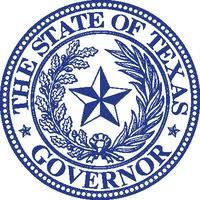Governor Abbott Readies Resources As Hurricane Ida Travels Through The Gulf
Urges Southeast, East Texans To Prepare For Severe Weather Impact
AUSTIN – Governor Greg Abbott today placed resources on standby along the Gulf Coast ahead of Hurricane Ida’s landfall early next week. Ida is forecasted to become a dangerous, major hurricane when it reaches the northern Gulf Coast on Sunday, August 29. Although Texas is anticipated to remain outside of Ida’s direct path, Southeast and East Texans should prepare for heavy rain, flooding, high winds, and potential extended power outages in the event that Hurricane Ida moves west.
"State resources have been deployed ahead of Hurricane Ida, which is expected to reach the Gulf Coast on Sunday," said Governor Abbott. "We will continue to closely monitor this hurricane and take all necessary precautions to keep Texans safe. Texans should follow the guidance and warnings of local officials and be mindful of potential flooding, high wind, and heavy rain."
Governor Abbott has approved the Federal Emergency Management Agency's request to activate Texas A&M Task Force 1 as a federal asset in support of Hurricane Ida response.
At the direction of Governor Abbott, the Texas Division of Emergency Management has readied the following resources in preparation to support request from local officials if needed:
- Texas A&M Forest Service: Saw Crews and Incident Management Teams.
- Texas A&M Engineering Extension Service: Swift Water Boat Squads, and Texas Task Force Two Search and Rescue Teams.
- Texas Parks and Wildlife Department: Boat Teams to support Water Rescue Operations.
- Texas Military Department: Helicopters, Sheltering Teams, and High Profile Vehicle packages.
- Texas Department of State Health Services: Emergency Medical Task Force severe weather packages and Ambulance Strike Teams.
- Texas Department of Transportation: Monitoring Road Conditions, Prepositioned Water-filled Barriers.
- Texas Department of Public Safety – Texas Highway Patrol: Search and Rescue Aircraft with hoist capability and the Tactical Marine Unit.
- Public Utility Commission: Power outage monitoring and coordination with utility providers.
- Texas Health and Human Services Commission: Water and Ice Contracts.
- Texas Commission on Environmental Quality: Public drinking water and waste water facility monitoring.
Texans are urged to follow these flood preparedness and safety tips during severe weather events:
- Know types of flood risk in your area. Visit FEMA’s Flood Map Service Center for information here: https://msc.fema.gov/portal/home
- Sign up for your community’s warning system. The Emergency Alert System (EAS) and National Oceanic and Atmospheric Administration (NOAA) Weather Radio also provide emergency alerts.
- Build an emergency supply kit. For more information on how to build a kit, visit: https://www.ready.gov/kit
- Keep important documents in a waterproof container. Create password-protected digital copies.
- Protect your property. Move valuables to higher levels. Declutter drains and gutters. Install check valves. Consider a sump pump with a battery.
- Be extremely cautious of any water on roads or in creeks, streams, storm drains, or other areas – never attempt to cross flowing streams or drive across flooded roadways and always observe road barricades placed for your protection. Remember, Turn Around Don’t Drown.
- Be extremely cautious of any water on roads or in creeks, streams, storm drains, or other areas – never attempt to cross flowing streams or drive across flooded roadways and always observe road barricades placed for your protection. Remember, Turn Around Don’t Drown.
For more flood safety tips, visit gov.texas.gov/hurricane.
Texans can also visit www.TexasFlood.org for resources and tips on how to stay safe during flood events.

